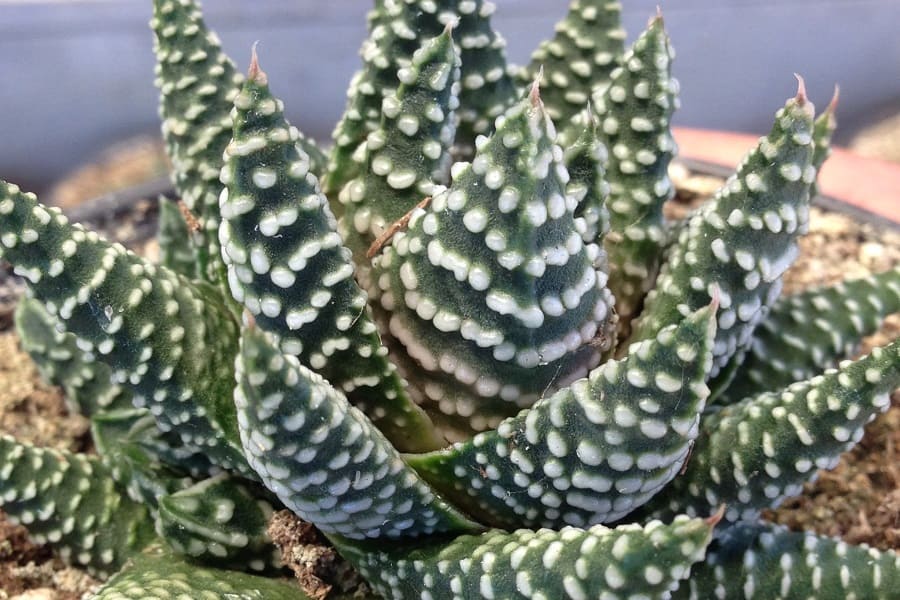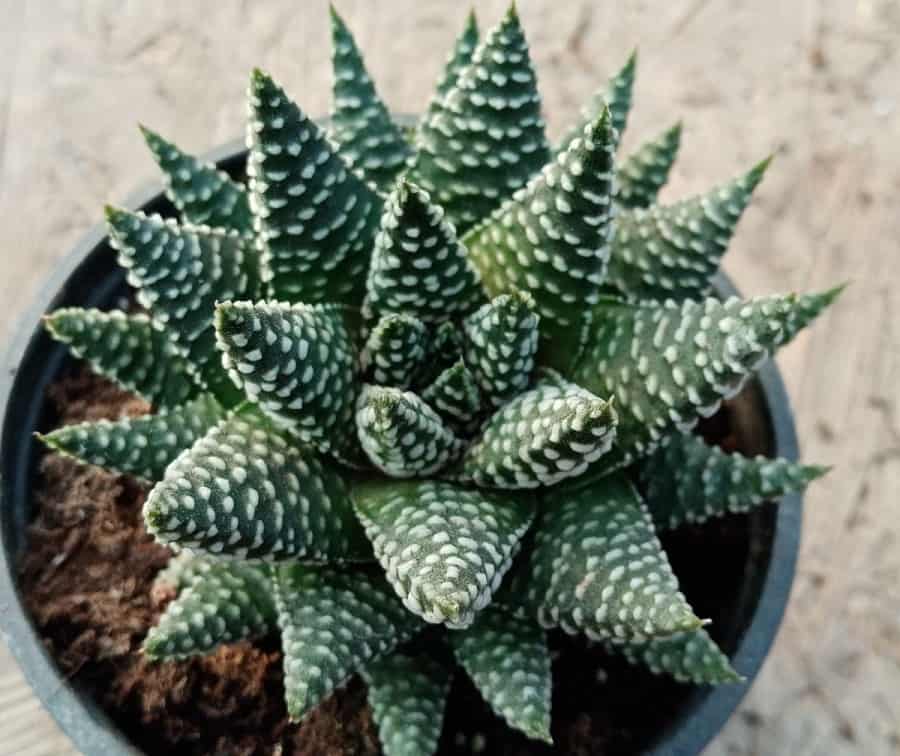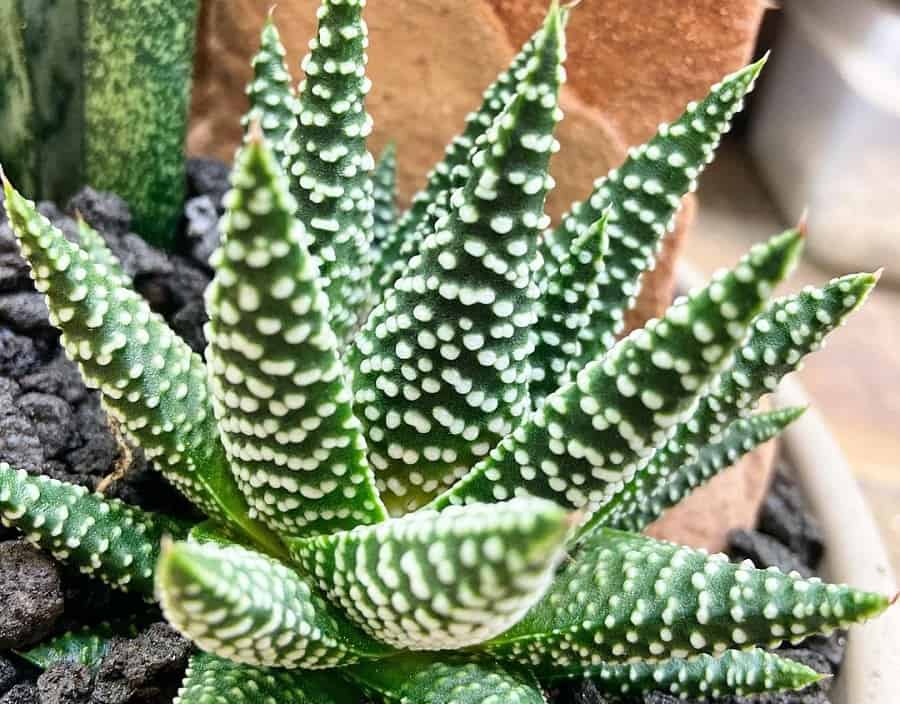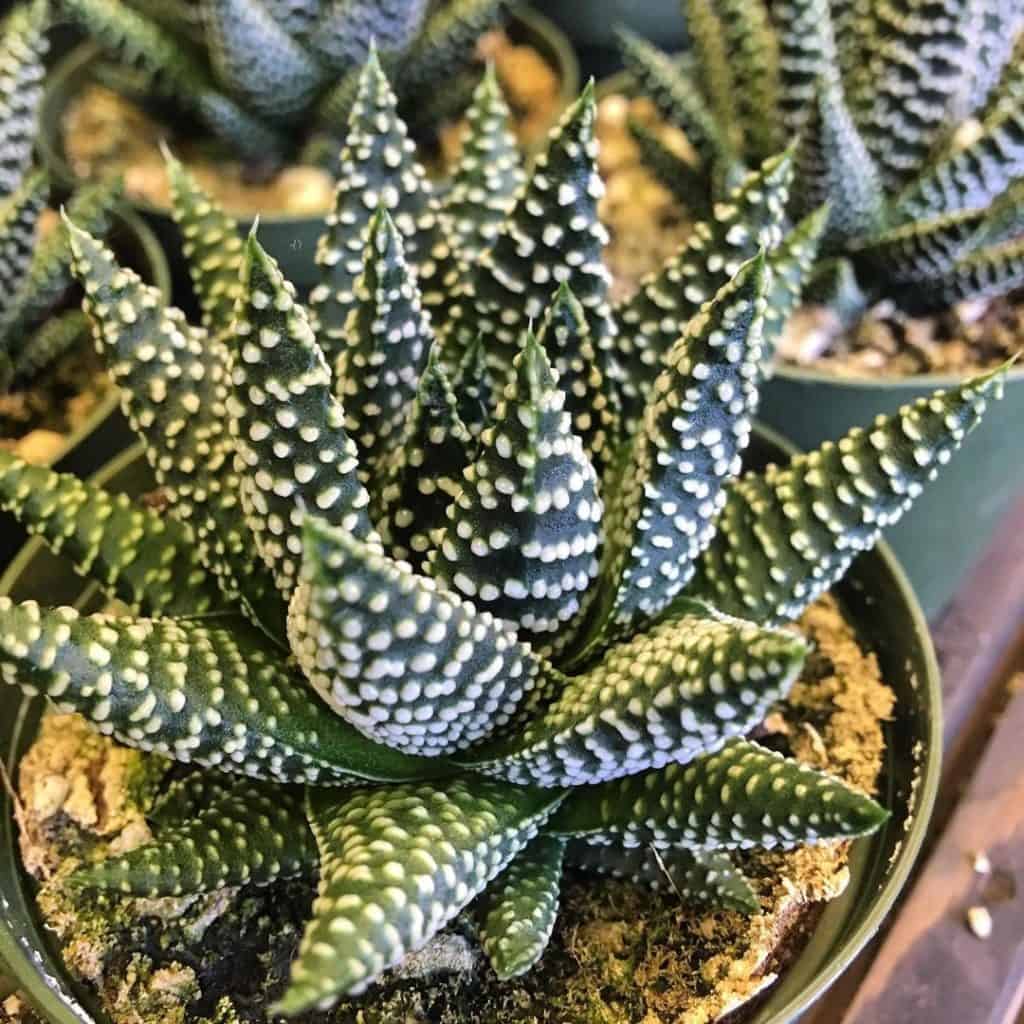Haworthia Albert: The Fascinating Succulent with Warty Leaves
Get ready to meet the star of your succulent collection – Haworthia Albert! This quirky little plant from South Africa is about to capture your heart with its bizarre yet beautiful appearance. With its thick, conical leaves covered in white, pearly warts, Haworthia Albert is bound to be the talk of the town (or at least your plant group chats!)

Contents
About Haworthia Albert
Also known as Haworthia fasciata ‘Albert’ or ‘Royal Albert’, this succulent typically stays close to the ground, reaching a maximum height of around 4 inches when fully mature. But don’t let its small stature fool you – Haworthia Albert packs a punch with its striking looks.
The real showstopper? Those fleshy green leaves that can turn a deep reddish-black hue when exposed to plenty of sunlight. Talk about a plant that knows how to work those moody vibes! And if you’re lucky, you might even catch a glimpse of its tiny, unassuming flowers during spring.
Now that you’re intrigued, let’s dive into the care guide for this low-maintenance beauty.
Related Post:
20 Types of Haworthia With Pictures
How to Care for Haworthia Albert
Light
Haworthia Albert prefers bright, indirect light – think of a spot near an east or west-facing window. Too much direct sunlight can cause its leaves to shrink and lose their vibrant colors. If you’re growing it indoors, a grow light can work wonders during those gloomy winter days.

Water
Like most succulents, Haworthia Albert is drought-tolerant but still needs occasional sips of water. During the growing season (April to November), water it when the top inch of soil feels dry to the touch. Avoid overwatering at all costs, as this can lead to root rot.
In the summer months (July and August), cut back on watering and simply mist the plant instead. And when winter rolls around, reduce watering even further – this little guy is practically a desert dweller during its dormant phase.
Soil
Haworthia Albert thrives in a well-draining soil mix. A cactus/succulent potting mix blended with some sharp sand or perlite will do the trick. Steer clear of heavy, moisture-retaining soils, as they can spell disaster for your plant’s roots.
Fertilizer
While not strictly necessary, a diluted cactus/succulent fertilizer applied once a month during the growing season can give your Haworthia Albert a little boost. Just don’t go overboard – too much fertilizer can burn those delicate roots.

Temperature and Humidity
This succulent is pretty easygoing when it comes to temperature and humidity levels. It can tolerate average household conditions, but prefers cooler temperatures (around 50-60°F) during its winter rest period.
Pests and Problems
Haworthia Albert is generally pest-resistant, but you’ll want to keep an eye out for mealybugs, scale insects, and root mealybugs. These critters can be tough to spot, so inspect your plant regularly (especially those tight leaf rosettes where they love to hide).
Pruning
No need for heavy pruning here – simply remove any dried or damaged leaves as needed. You can also take a leaf or offshoot for propagation purposes.
Potting and Repotting
Haworthia Albert is happiest when slightly pot-bound, so only upsize its container when the plant has outgrown its current digs. Early spring is the best time for repotting, using a fresh cactus/succulent mix.

Haworthia Albert Propagation Methods
Ready to multiply your Haworthia Albert collection? No problem! This plant is a pro when it comes to propagation.
• Offsets (pups): Carefully separate any offsets that have developed their own root systems and pot them up individually.
• Leaf Cuttings:
– Remove a healthy leaf and let the end dry out for 2-3 days
– Lay the leaf on top of a well-draining potting mix
– Keep the soil lightly moist and wait for new roots and growth to appear
• Seeds: Although less common, you can also propagate Haworthia Albert from seeds. Just bear in mind that the resulting plants may not be exact clones of the parent.
With its captivating looks and low-maintenance needs, Haworthia Albert is a must-have addition to any succulent lover’s collection. So what are you waiting for? Bring some quirky charm to your indoor garden today!
